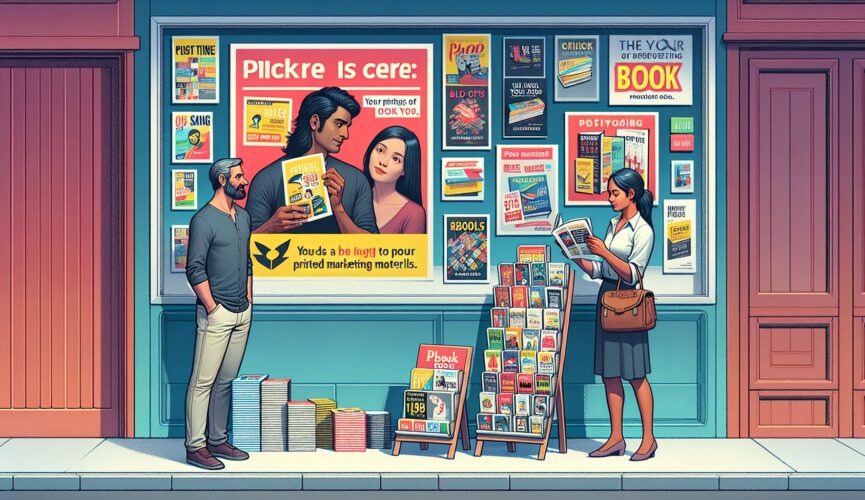In today’s digital age, it’s easy to get caught up in the hype surrounding online marketing strategies. With the ever-increasing popularity of social media, email marketing, and search engine optimization, it’s easy to forget about the tried and true methods of printed marketing materials. While digital marketing certainly has its benefits, it’s important not to underestimate the power of print in reaching your target audience. In this article, we will explore the numerous advantages of printed marketing materials and discuss why they still have a valuable place in any well-rounded marketing strategy.
I. The Tangible Appeal
One of the most significant advantages of printed marketing materials is their tangible nature. Unlike digital advertisements that are often quickly scrolled past or clicked away, physical materials such as brochures, flyers, and business cards demand a certain level of attention. When someone holds a brochure in their hands, they are more likely to spend time going through it, absorbing the information, and even keeping it for future reference. This physical interaction with the material enhances the overall impact of your marketing message.
II. Trust and Credibility
While the internet provides vast and convenient access to information, it also opens the door for rampant misinformation and scams. For many individuals, it’s become increasingly difficult to discern between genuine businesses and those operating with nefarious intentions. Printed marketing materials, on the other hand, tend to establish trust and credibility in the minds of consumers. When people see a well-designed brochure or a professionally printed business card, they feel reassured that the business is legitimate and trustworthy. This crucial sense of trust can significantly impact their decision-making process.
III. Targeted Reach and Personalization
Printed marketing materials allow businesses to target specific demographics or niches effectively. By tailoring the design, content, and distribution channels of your printed materials, you can ensure that your message reaches the right audience. Additionally, the personal touch of physical marketing materials allows for a more personalized experience. For example, including a recipient’s name on a direct mail piece or customizing a business card with individual contact details adds a level of personalization that digital marketing struggles to replicate.
IV. Boosting Brand Awareness
In today’s crowded marketplace, building and maintaining brand awareness is vital for any business. Printed marketing materials provide an excellent opportunity to create and reinforce brand recognition. Consistent and eye-catching branding across various printed materials such as brochures, banners, and posters helps to establish a recognizable identity in the minds of consumers. This, in turn, contributes to brand recall, ensuring that your business stands out among competitors.
V. A Break from the Digital Overload
While spending time online has become an integral part of our daily lives, it has also led to digital overload and screen fatigue. The oversaturation of digital content has made it increasingly challenging for businesses to capture and hold consumers’ attention online. Printed marketing materials offer a welcome break from this saturated environment. By providing a tangible experience away from the screens, you give your audience a chance to engage with your marketing message without the distractions that come with digital platforms.
VI. Longevity and Memorability
In the fast-paced world of online marketing, message retention can be challenging. With countless online ads bombarding users daily, it’s easy for your message to get lost in the noise. However, printed materials offer a unique advantage in terms of longevity and memorability. When someone keeps a brochure or a business card, they are more likely to encounter it again at a later time. This repetition helps to reinforce your message and increase brand recall. Additionally, the physical nature of printed materials often evokes an emotional response, making them more memorable compared to fleeting digital experiences.
Conclusion
While digital marketing may dominate the current landscape, printed marketing materials still hold significant power and should not be overlooked. The tangible appeal, trust and credibility, targeted reach, brand awareness, ability to provide a break from digital overload, and increased memorability all contribute to the effectiveness of printed materials. By incorporating print into your marketing strategy alongside digital efforts, you can create a well-rounded approach that resonates with your target audience and sets your business apart from the competition. So, the next time you consider marketing your business, remember the enduring impact of printed materials.









